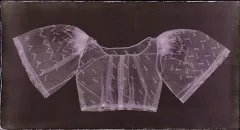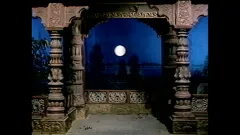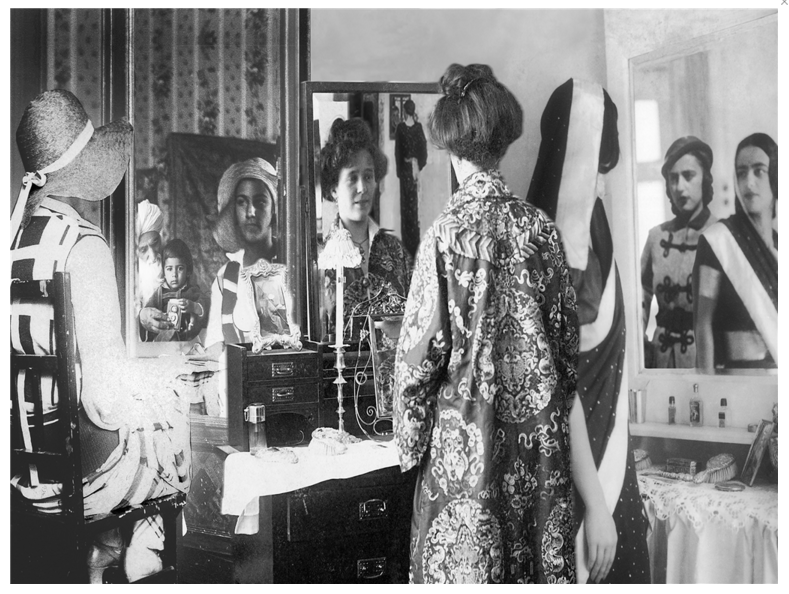
Bourgeois Family: Mirror Frieze, 2001, Re-Take of Amrita
Nandita Raman: Found objects seem to be an integral part of your art making process including your drawings on existing reproductions of statues from archeological sites in the exhibition “I need my memories. They are my documents”. Were these one of the first ventures into using found material? What are the sources of these reproductions?
Vivan Sundaram: In 1965–66, the word or the concept of found object wasn’t part of my vocabulary. I, along with Bhupen Khakhar, was part of what we called pop art, which had aspects of graffiti, of kind of playful iconoclastic kind of working. I’m talking of the pop art movement in Baroda. I found something and then scribbled over it, and, as I said, we didn’t designate it as a found object, but of course now pop art and found objects can be linked.
At the time Bhupen Khakhar was using oleographs and cutting them up. So I had that context. I found the reproductions in a modest government publication when I was traveling to Khajuraho. It was a small-size book, hardly 7-by-5 inches, of sculptures from Khajuraho. When I came back I continued to play around, fool around, with that imagery. In fact I traveled to Banaras with this publication and even taught briefly at the Krishnamurti school in Rajghat. In Banaras, I found traditional backdrop paintings made by popular artists that I got done in a smaller size. So there is some connection between these drawings and what was happening simultaneously in other works that I was making.
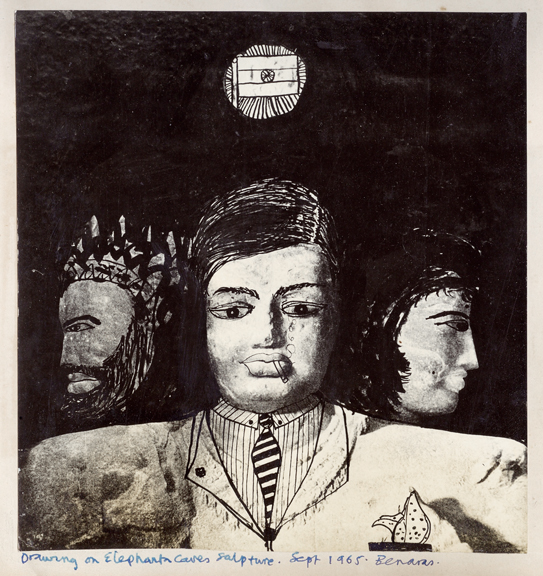
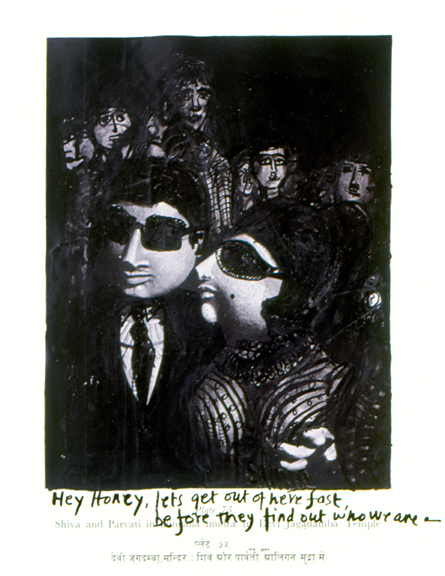
The captions that sometimes accompany the visuals have playfulness, immediacy about them. Do you often use language in your work?
Well, I did do collages later on when I went to London, by cutting up things from magazines. But they were just playful exercises as I was acquainting myself with the London pop scene and advertising. So there is some continuity of interest there.
During my time in London, I stopped painting from 1968–72 and got into a course in history of cinema, and lived in a commune. This is when the May 1968 student movement took place and I got politically active. On returning to India in 1972 I felt like going back to making art. I came across Pablo Neruda’s poem Heights Of Macchu Picchu, and made a series of 24 drawings, closely connected with four or five lines of the poetry, but I didn’t put those words into the paintings.
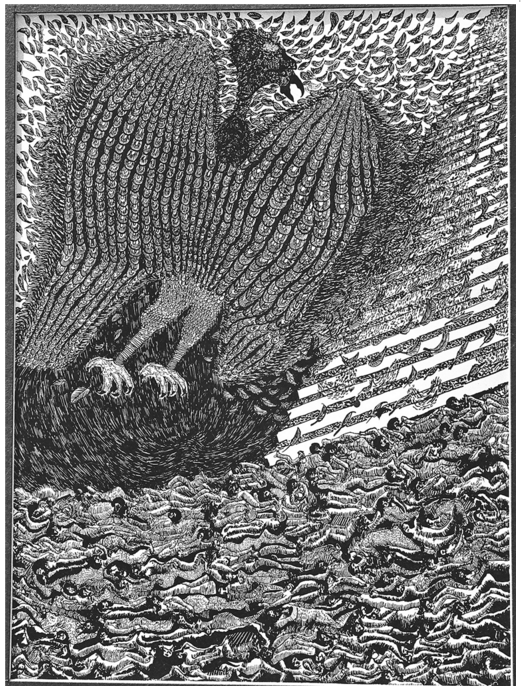
So when you came back to India after your years in London, did you find yourself operating differently from when you had left, not only because it was a different country, culturally, but also it seems you became more politically active.
Before I left for London, I wasn’t political at all. It was after art school that I traveled to England. There I was enjoying the cultural life, saw Mick Jagger perform in Hyde Park, watched films. So all this dominated my days. But then I was confronted in direct and indirect ways, with racism. Somebody called Enoch Powell started making racist speeches. Then in Slade School I was literally pulled out from my studio, and they said, “Come on man, you are a person of color so you better do something.” Then the Vietnam War and the movement around it started growing. That attracted me and I started attending meetings, so it was a slow process of getting politicized. But the whole atmosphere was so volatile with things happening so fast and dramatically, like the occupation of art schools, London School of Economics, and so on. And then I found myself in front of Grosvenor Square at the American Embassy shouting slogans against the Americans. It was very much a widespread cultural political phenomenon. And the two were overlapping in a very dynamic and fluid way. So there was a great deal of spontaneity. Encounters with a range of people in the commune, helped various aspects of my growth and experience.
Why did you choose to come back to India?
That’s a good question. When you’re there for four years, so immersed in that context and flowing completely in that moment and with exceptional people, I could have just gone on living there. But, I just felt that after four years, time was up. And I connected with what was happening in India. Of course most of what came as information was about Maoist movement or the Naxelite movement. And I was inclined towards it. In any case, much of the student movement was very anarchist. So I started making my way home. Literally hitchhiked and went by train, across Iran, Iraq and Afghanistan. I had to fly over Pakistan. In India my politics shifted towards the Communist Party of India (Marxist). There was a student movement in Delhi, I found people who I could connect with.
When you got back, was that the point when you founded the Kasauli Art Center, which became the site for workshops to “explore common ground between artists, filmmakers, critics, architects, playwrights and performers?” What was the impulse behind it?
Already in England, I had moved across into studying the history of cinema. The whole cultural environment was such. The Living Theatre would come there, the Bread and Puppet Theatre performed, so there were multidisciplinary activities taking place. This was already part of my cultural framework. Since a break away from painting other reference points were very much part of my existing horizon. I wasn’t an artist who was just sitting in his studio, painting and coming back.
The workshops in Kasauli started after my mother, who lived there, died. So expressed to my father that I wanted to start something like a center and he agreed. He was a civil servant and a bureaucrat, but left it up to me to do things there. That’s how I started the center.
At the time when you started it, how did your friends and other artists in your age group respond to it? The experiences you had in London at the time, was that possible in India? Were there any cross-medium dialogues in the 1970s in India?
By the early seventies, there was already a nascent movement away from the dominant tendency of the mid-sixties, which was called Neotantric movement. That style and abstraction didn’t interest me. I had been politicized, so the subject matter that I was working with was too, for instance, the Neruda poems come from a communist point of view. I started connecting to people who were doing figurative work. Baroda already had a tradition and a convention. And I reconnected with my friend Bhupen Khakhar who had very engaged relationship with people, the environment and their context. And so, slowly, we started gathering other artists who were also thinking of the social theme or figuration. Different from the earlier generation, the Progressive Artists Group that had gone to Paris and painted the human figure from an individual existential point of view, here the social context started connecting the personal with the individual. So I think that also gave a cue to the kind of artists one started collecting, many of whom were friends. In those days, there wasn’t a market worth its name, everybody was painting in a much more leisurely kind of way. I didn’t have much money to start this, just the house. Kasauli looks down at Chandigarh, where I contacted Dr. Goswami from Punjab University Museum. I said to him, you’ve got a museum, and I’m doing these artist workshops where artists will contribute a painting. He asked, how much? I said, five, six paintings and fifteen thousand rupees. And he agreed. The artists were very generous and giving. There was a sense of togetherness and fraternity. Gradually the work at Kasauli started moving towards what finally became a seminal show in 1980–81, called Place For People. So, in one sense, Kasauli Art Center started without any program.
Then, because of my relationship with people in the Communist Party of India and the intellectuals there, we could slowly build a group of people. Also, during this time a seminal journal called the Journal of Arts and Ideas was formed. The University of Chicago has all the issues available. G.P. Deshpande was on its board. He was a professor of Chinese and a Marathi playwright. There were filmmakers, theatre people and people from literature on it, so that journal was already multidisciplinary. So for the artist workshops at Kasauli there were a lot of artists, but we would also get people from different disciplines and simultaneous workshops and seminars in those disciplines took place.
Having conversed with so many different mediums, and people who were practicing in many different ways, what’s your process? How do you decide what medium to pick for a work?
Right through the 1970s and 1980s, we were very conservative in India. We were making paintings or sculpture mostly and not doing anything multidisciplinary. It was only at the beginning of the 1990s that this crossing over and working in new mediums started. Since Place For People (1981) had become a landmark exhibition, it obviously influenced artists particularly from Kerala and Baroda. And there was a whole movement towards figurative art in Kerala. But it’s really at the beginning of the 1990s that things started changing dramatically, both in terms of the political situation as well as the opening up of technologies, mainly television coming to India along with the new liberal policies of capitalism. In 1989, theatre activist Safdar Hashmi was murdered, which led to the formation of SAHMAT where I was a founding member.
In 1992-93, the tragic riots took place in Bombay in which thousands of Muslims were killed. A small group of artists of my generation—me in Delhi and Nalini Malani, Navjot Altaf and Rummana (Hussain) in Bombay—responded to the events. That was really a key moment. SAHMAT brought together theatre people, film people, historians and Marxist economists that organized both cultural and political opposition towards the BJP attack on Babri Majid. So, connecting with people from different disciplines has always informed my work. For an exhibition, Collaboration/Combines (1992), I started making sculptures using photographs, and different forms started entering my vocabulary.
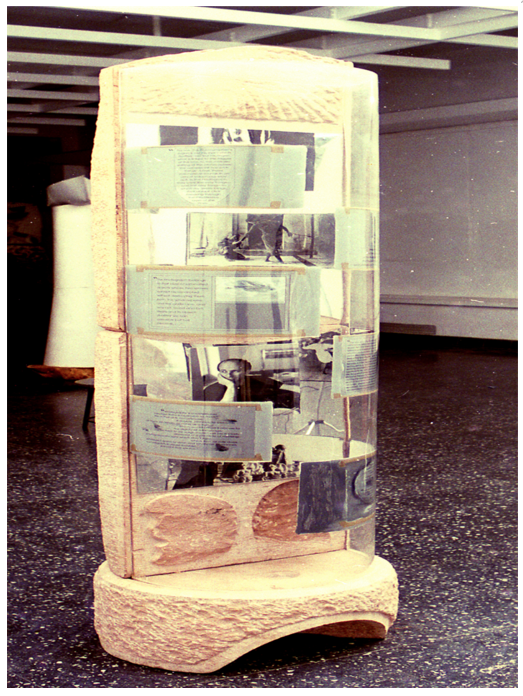
And how do you now find yourself thinking of photographs, how do they function for you?
Very rarely do I take photographs myself, but I make photographs or construct photographs in a way that’s similar to using found object. The found object that I found close to me was my family album. I opened it to find that my grandfather, Umrao Singh Sher-Gil, took quite interesting photographs. Right from the 19th century, when cameras entered the hands of the middle class, the family album has possibly become the largest genre or form. And I got very engaged in looking at it and realized that there was more to it than just taking pictures of the mother and children. So this lead me to a relationship with photography in a much more self-conscious way.
I’ll tell you an anecdote. I was in London for the Festival of India, my wife Geeta Kapur was the curator of the painting exhibition. I was helping her contact people. I’d heard of Victor Burgin and got his phone number. He said, “Yes, what can I do for you?” And I said, “Well, there’s an exhibition of contemporary Indian art, and I’d like you to see it.” His first question was, are there any photographs in it? I mumbled and said, “No, I use photographs to make painting.” So he shot back at me and said, “I’m not interested in your using photographs to make paintings. Do you have or make photographs?” I apologized and said no, and bang, he put the phone down. That was in 1982, and since then I honed in onto my family album to make a large painting, called the Sher-Gil family. I constructed it with cinematic elements. It got linked to my friend Kumar Shahani who was making a feature film on Amrita Sher-Gil. I was thinking of the painting with some cinematic mise-en-scène. Once I shifted to making objects, I made Stone Column Enclosing the Gaze in 1992. It was my first curatorial experience of sorts where I put together a small show in a stone column, six feet high. Approaching four or five photographer friends, I proposed to put their photographs into this red sandstone column. It was a phallic-like column, but half of it was Perspex. I stuck the photographs on the inner surface of the Perspex. I was reading Barthes’s Camera Lucida then, so I had quotations from it on the outer surface towards you, the photographs were only seen as a reflection in the mirror. The relationship of text to the photograph is a known one. And this work made me think of myself as an artist, as a curator. In one sense, in curating my grandfather’s work I connected with the concept of the archive. The archive actually became a form, and then surprisingly in 1995 I had an exhibition called the Sher-Gil Archive. Much later I realized that the word archive is so hugely used. So I was very pleased when Okwui Enwezor in his ICP, exhibition Archive Fever, included this work.
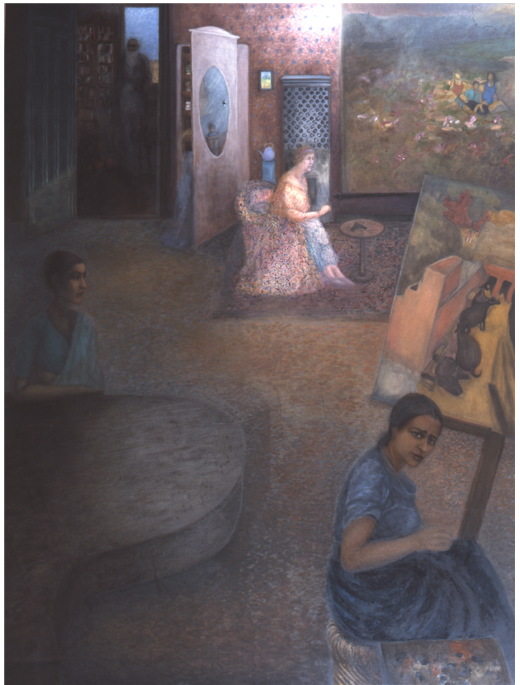
You talk so much about the Re-take of Amrita and the self-portraits of your grandfather, Umrao Singh. Do you find people in other countries receiving your work completely differently because they don’t have the context?
It is a pertinent question for you to ask. Re-take of Amrita for instance has been exhibited now in over 50 cities all over the world, and at the risk of using an old-fashioned word, I’d say there is something in it which is universal. Whether I’ve shown it in Shanghai, Vancouver, or in Paris, there’s an interest in it because of the quality of Umrao Singh’s photographs, perhaps. There are tensions between something as particular as being an Indian, Sikh or Sardar and the European relationship, so there is a cosmopolitanism that is naming itself, from the very look in the photographs from the 1920s and 1930s, when the whole family moved to Paris. In the interior of that upper-middle-class home, there was as if a set where the performance was set up. Umrao Singh shoots himself then his daughter poses for him and so on.
When you look at the art making context and younger artists in India, do you see your younger self in them?
There has certainly been a huge change in the market. And that’s bound to happen. There are terrific things about it. Young artists don’t have to teach in a school or join an advertising agency or other part-time work. This energizes them to make money, live better and have a big studio. So the whole means of artwork production has in some cases become an assembly line of production. There is a demand making it possible to think on a big scale. That’s fantastic.
If I had not stopped painting and come back from England, then I could have been very different from everybody else. But I felt that I should come back and connect with my friends and colleagues in Baroda. So I think that was important for me.
In the last few years there has been a big shift towards more sophisticated articulation by artists, who are informed, travel much more and are now global artists. And they’re doing exceptionally well. And of course like in all systems, in capitalism, galleries want to catch them young so they have a long run. Suddenly artists who are very young are far more famous or doing as well in the market as an artist who has been working for 40 years. So I think that there’s this new kind of racing ahead and advancing, in a positive sense. But sometimes it wears thin and you can’t sustain it and the context doesn’t let you sustain it. It was a very short run for the Indian art market up to 2008, when the famous crash, the Lehmann Brothers incident, happened. So that affected the Indian market as well. But I think that there is a new confidence among younger artists and they’re thinking differently, and across many mediums.



